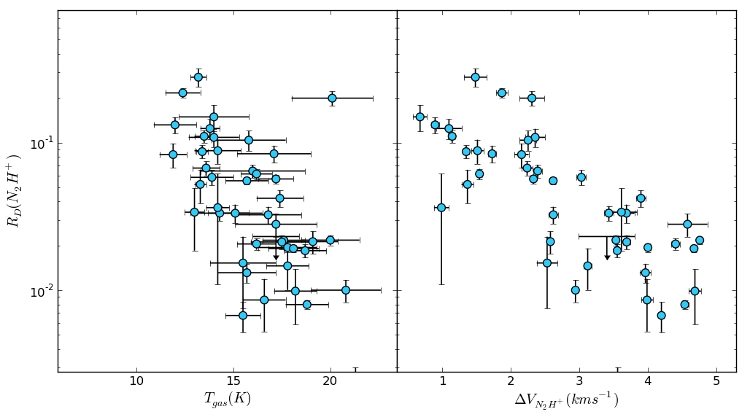| EPoS Contribution |
|
Probing evolutionary stages of infrared dark cloud cores with deuterium fractionation
Vlas Sokolov NTHU, Hsinchu, TW | |
| Infrared dark clouds (IRDCs), dense and dark silhouettes against bright Galactic background, are thought to be the cradles of massive star and cluster formation, being cold, dense, and massive enough to harbour massive protostars at some point of their life. Previous studies show great diversity of IRDCs, ranging from dense quiescent clouds on the verge of star formation burst to relatively evolved regions with embedded massive protostars driving outflows and forming HII regions. Various tracers of IRDC evolution have been proposed, aiming to establish a coherent picture of IRDC diversity and evolutionary sequence. In this study, we derive gas temperature of 12 dark cloud cores to complete the last portion of a large deuterium fractionation survey of 44 IRDC cores. We examine correlation between deuterium fractionation of N2H+ with several evolutionary tracers. A clear decreasing trend has been confirmed with increasing gas temperature and line width, exhibiting resemblance to low-mass star forming regions and suggesting deuterium fractionation as an evolutionary probe for their high-mass counterparts. | |
 | |
| Caption: Decreasing trend in deuterium fractionation vs. gas temperature and line width. | |
| Collaborators: V. Chen, NTHU, Taiwan S.-Y. Liu, Academia Sinica, Taiwan Y.-N. Su, Academia Sinica, Taiwan |
Suggested Session:
Cores |

